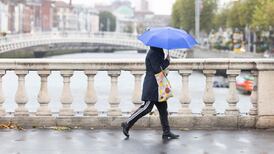No matter how long you’ve left the town where you grew up, any printed mention of its name leaps off the page. An announcement of 23 new marine conservation zones for the UK included one for “Brighton offshore”. This took me out to sea at once, a kilometre or two beyond the pier, manning a fishing rod in company with two benevolent printers from my first local paper.
They knew the right place to stop and anchor the dinghy (a proper boat, by the way, of varnished, carvel-built timber) by lining up the spire of the old church on the hill with a shiny building on the seafront. The mark for the new marine conservation zone, or MCZ, on the other hand, is a large, wonky rectangle drawn on a map. It is also so far south of Brighton, out in the depths of the English Channel, as to butt against the median line with France.
The boundaries to its 862sq km of rock and gravel were, indeed, set to avoid a heavily used French scallop-dredging area to the south, and moved west “as much as possible” to avoid areas heavily used by both UK and Belgian trawlers.
You could wonder, then, how its rich animal life, most of it buried in the dark beneath strong currents, will really be left undisturbed. Like so many conservation zones drawn on ocean maps, the “Brighton offshore” MCZ risks dismissal as yet another “paper park”.
Marine conservation zones – otherwise marine protected areas, or MPAs – are the offspring of Ospar, the Convention for the Protection of the Marine Environment of the Northeast Atlantic, which is supported by 15 states, including Ireland, plus the European Union. It has taken many years for the UK to designate its current total of 50 sites – less than half those earlier proposed.
Ireland has so far submitted 19 marine protected areas to Ospar. Five of them are deep-sea zones off the southwest and west that hold the cold-water coral reefs threatened by bottom trawling. The rest are inshore – large, shallow bays and estuaries around the coast, from Dundalk Bay, on the Irish Sea, to Ballyness Bay, at Falcarragh, in Donegal, and including the Blasket Islands (search npws.ie for "Ospar MPAs").
As declaring an Ospar MPA creates no legal protection for a zone, Ireland has followed other European countries in making most of them special areas of conservation under the EU habitats directive. However little protection this may offer to sites out to sea, it does offer potential control over inshore developments, through planning objections and fishery bylaws.
But what "management" of our marine special areas of conservation actually means is far from clear. The main aim is to keep them in ecologically "favourable" shape, which means measuring any changes to "unfavourable" or even "unfavourable-bad". But a report for the Government in 2011 (Crowe et al 2011: Department of Environment) found there wasn't enough research to show the naturally caused changes that might occur under the tides, still less what to do about any others. Meanwhile, divers were dispatched to explore marl beds, seagrass, sea pen colonies and so on, to arrive at conservation objectives for each site.
Banning inshore trawls and dredges can do a lot of good. In Lyme Bay, on England's south coast, for example, three years' protection of a sensitive reef brought huge increases in the abundance of sea fans, bryozoans, hydroids and sponges – sea-bed organisms vital as nursery grounds for juvenile fish. (You can read about this in a piece from the journal Plos One.)
But how can trawlers, from a range of countries, be controlled far out of sight of land? Aircraft and patrol vessels cost too much, but satellite technology provides “eyes in the sky”. With the right data links they can plot and identify trawlers fishing on forbidden ground.
Marine Scotland, the Scottish fisheries protection agency, has used this to enforce a ban on trawling the Darwin Mounds, precious deep coral reefs northwest of Ireland. It has relied on satellites to track the trawlers, but this needs fishermen to install vessel monitoring systems, or VMS, which respond with location, course and speed. UK trawlers must now use VMS boxes without an Off button, but this has not been extended throughout the European fishing fleets. Many countries around the world have still to equip their trawlers with systems that broadcast their identity.
Even when a trawler has been spotted entering a deep-sea marine protected area, it has to be proved that it was trawling the seabed, not catching pelagic (or upper-sea) species, such as mackerel, and this needs on-the-spot checking. It may also need boarding from patrol vessels, which, as a study of the Scottish protection programme stresses, "is expensive, dangerous and logistically challenging". (You can read about this in an article in the Bulletin of Marine Science)homepages.ucl.ac.uk/ ~ucfwpej/pdf/DarwinBMS.pdfd.
The term “paper park”, commonplace in global marine conservation, was coined in 1999. A 2013 report on Ireland’s habitats found the condition of deep-water reefs still “bad with an ongoing decline”.
Michael Viney's Reflections on Another Life, a selection of columns from the past four decades, is available from irishtimes.com/ irishtimesbooks











